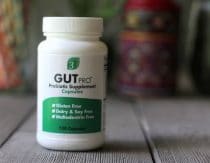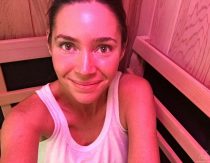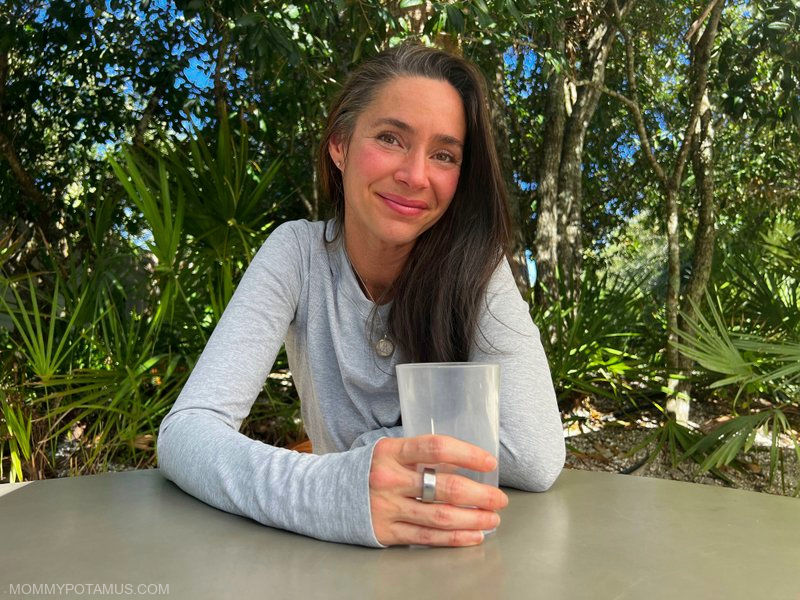
Oura Rings are kind of like a secret handshake: They’re so discreet most people don’t notice them . . . unless the other person also has one, that is.
In that case, they’re basically a stealth way of saying “Why yes, I would love to chat about saunas, biohacking for better sleep, and that new gluten-free restaurant that just opened.”
At least, that’s my experience after owning one for five years. When I was first gifted my Oura ring – by an individual, not the company – I thought of it as “nice to have” but not something I would have purchased otherwise.
It turned out to be one of the most useful wellness tools I’ve ever tried, so I bought one for my husband. He loved his so much we decided to buy one our teen daughter. That ended up being an amazing decision, so now we’re planning to buy rings for each of our boys when they’re older.
More on why later, but first you might be wondering . . .
What exactly does an Oura Ring do?
Although it looks like a modern piece of jewelry, it’s actually a smart ring that analyzes your heart rate variability (HRV), blood oxygen levels, body temperature and other metrics in order to provide personalized insights on stress, physical activity, sleep and more.
Now, if you’re like me you probably don’t love most “smart” devices that emit EMFs – in that case, the first thing you should know is that the ring can be worn in “airplane mode.”
Mine is always in airplane mode when I wear it – I only activate bluetooth for a few minutes a day to sync my data with the Oura app, and during that period it’s resting on its charger.
During that short daily check in, I’m able to see:
- When my body temp is above normal (potentially indicating the beginning of a cold or something)
- If my body has sufficiently recovered from an intense workout (or if I might need a rest day)
- How certain foods and/or activities affect my overall well-being (as measured via heart rate variability)
That’s just the beginning, though. There are insights about sleep, period prediction for those of us who have a monthly cycle, and more.
Basically, it’s a comfortable, lightweight wearable that helps me (and a whole lot of other people) make real-time decisions that support our health and wellness goals.
With that in mind, here’s a deeper dive into what I love about my Oura Ring:
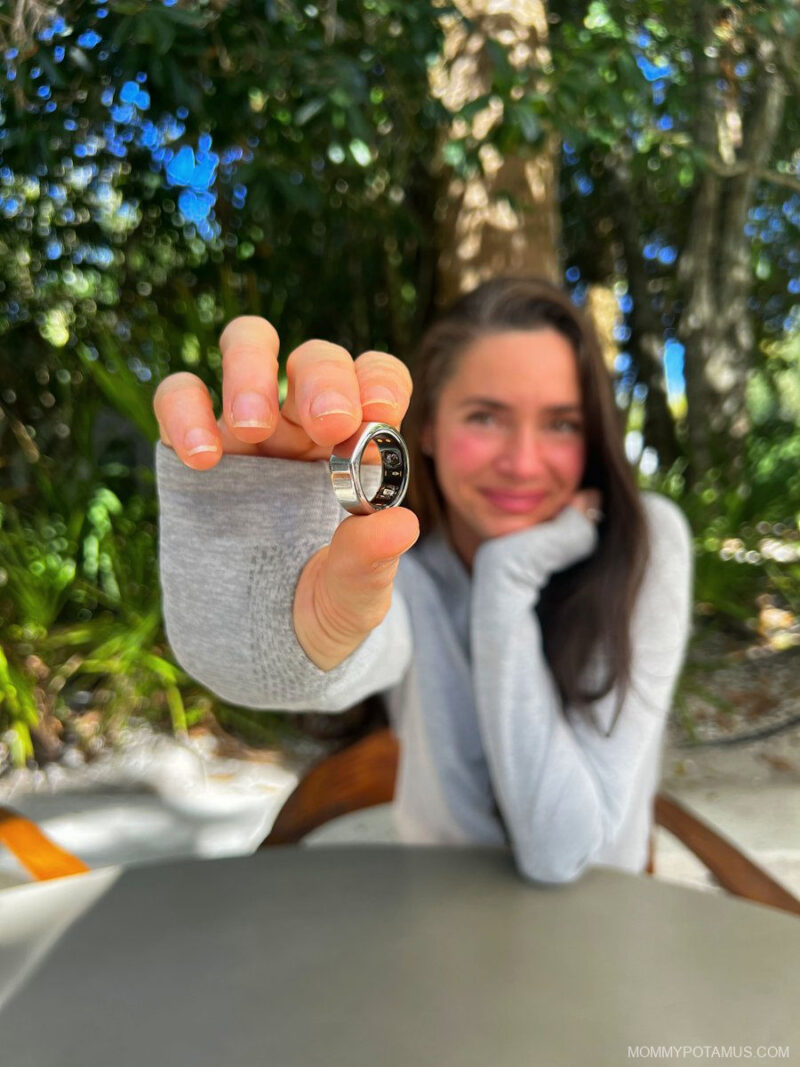
Benefit #1 – Less Guesswork. Better Results.
Have you ever wondered if eating late at night really decreases sleep quality or if wearing blue light blocking glasses actually improves it?
It’s pretty easy to figure those things out – and a lot more – using your daily scores from Oura. Let’s look at each one.
Sleep Score
This is an overall analysis of how well you slept the night before. In addition to providing real-time feedback for particular day, your score can also help you identify any trends that may be preventing you from feeling refreshed when you wake up.
The seven data points used to create your score are:
- Total Sleep – Did you get enough?
- Efficiency – How long did you truly sleep while you were in bed? For example, did you wake up in the middle of the night and have trouble falling back asleep?
- Restfulness – Did you toss and turn a lot?
- REM Sleep – This sleep stage is associated with dreaming, memory consolidation, and creativity. Did you get enough?
- Deep Sleep – This sleep stage is associated with tissue repair, immune system activity, and the good kind of brainwashing. Did you get enough?
- Latency – How quickly did you fall asleep? The sweet spot is typically around 15-20 minutes. Less than 5 minutes can indicate overtiredness, and longer than 20 minutes may suggest that something is impacting your sleep. (Maybe you forgot to put on your blue blockers?)
- Timing: Are you sleeping in harmony with your natural circadian rhythm?
Gen3 rings also come with additional sensors that track nighttime blood oxygen levels (SpO2) and breathing regularity.
For people who don’t feel rested when they wake up, a consistent pattern of interruptions and low oxygen saturation might be a good reason to ask a care provider about getting a sleep study done. Although the data is not diagnostic in any way, it may suggest that further investigation into the possibility of sleep apnea is worth considering.
Readiness Score
This is an analysis of how ready you are to take on the day. It uses nine data points that you don’t necessarily need to understand in order to benefit from knowing your score, but in case you’re a research nerd like me here are a few that are included:
HRV Balance – Heart rate variability is an indirect measure of overall well-being. When it’s high, that generally suggests that the autonomic nervous system is balanced, adaptable, and capable of responding to the environment/new situations effectively.
When it’s low, it may mean that the body is stuck in stress mode (sympathetic dominance) and that you should take it easy if possible. For more info on HRV, check out this article.
Recovery Index – When your resting heart rate stabilizes fairly quickly during sleep, it’s an indicator that you’ve had ample time to recover from the previous day’s demands.
Sleep – The overall quality of your sleep (as measured by your sleep score) is always factored into how ready you are for the day.
Body Temperature – A sudden rise could suggest a cold or something, which might mean it’s best to take things easy for the day.
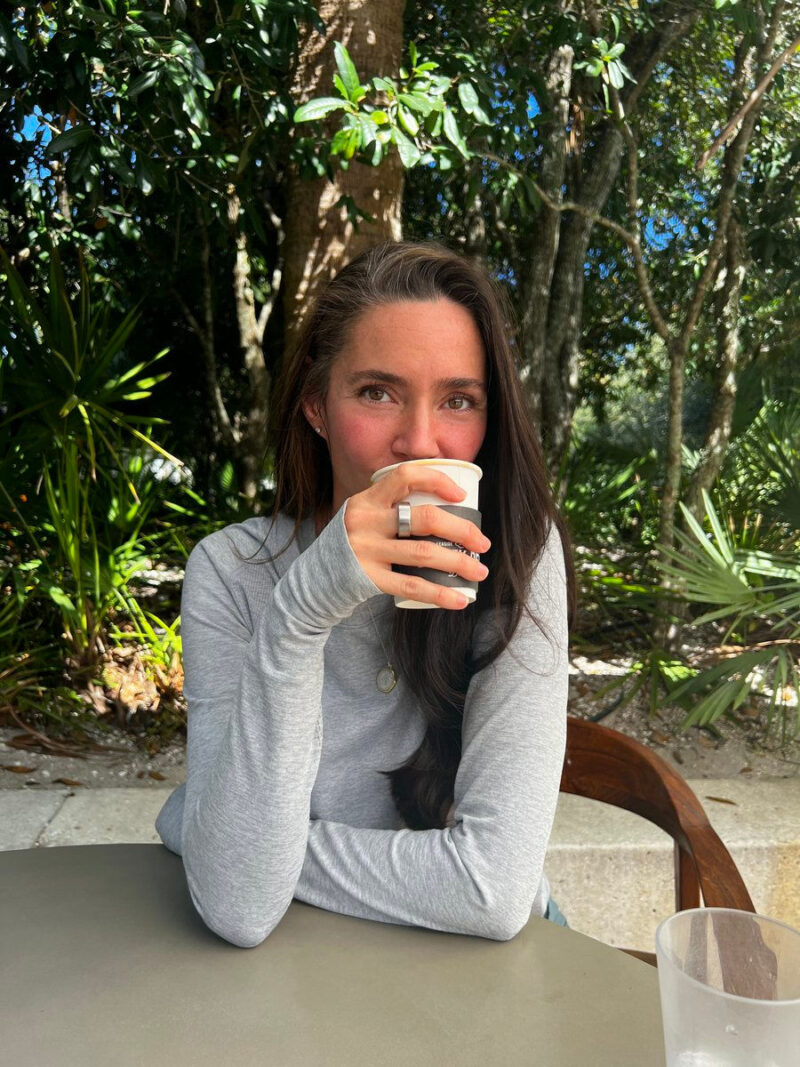
Activity Score
Your activity score indicates how well you are balancing activity with rest . . . at least theoretically, that is.
My Gen2 ring uses a 3D accelerometer to assess how much I’m moving throughout the day. It’s great at picking up walking and other activities where my hand movements roughly correspond with whole body movements, but it tends to miss my cycling workouts because my hands are basically stationary.
For walking/running, though, it provides solid data on distance walked, calories burned, etc.
The newer Gen3 ring has additional sensors that have improved activity score accuracy. There’s even a workout heart rate feature, but it requires an active bluetooth connection in order to work. (In other words, it can’t be accessed when the ring is in airplane mode.)
How I Use My Daily Scores
For me, seeing the connection between my day-to-day activities and my scores motivates me to make better choices. I don’t just think that ten minutes of stretching and breathwork in the morning will improve my nighttime HRV, I know it.
Through personal experimentation, I also know that eating popcorn will tank my HRV, but popped sorghum won’t. (So happy about that!)
Oura recently added pre-created experiments within their app, too. For example, right now I have the option to learn how drinking caffeine within six hours of bedtime affects my readiness score. I already know the answer so I’m not participating, but I’m looking forward to seeing what experiment they offer next.
Bottom Line: Oura offers actionable insights that take a lot of the guesswork out of what is working for me (and what’s not).
Benefit #2 – HRV Accuracy
High HRV is strongly associated with better physical and mental health, so it’s one of the metrics I pay the most attention to. (1)
Unfortunately, although many wearables say they measure HRV, most tend to be inaccurate.
With that said, a head-to-head test conducted by Marco Altini – who holds a PhD in machine learning – found that the Oura ring was by far the most accurate. (2) The measurements collected by Oura were nearly identical to EKG readings, which are considered the gold standard for tracking HRV.
Benefit #3 – Period Prediction
Menstrual cycles have two main phases – follicular and luteal. During the follicular phase, which starts with day one of your period and ends with ovulation, your basal body temperature (morning temp) tends to be on the lower end of what’s normal for you.
After ovulation – the luteal phase – it starts to rise. Using skin temperature readings along with other biosignals like HRV, Oura creates a period prediction window that can give up to six days advance notice.
There are some caveats, though. For example, it takes about 60 days for Oura to learn enough about your biorhythms to begin making personalized predictions, and factors like fertility treatments, endometriosis, pregnancy, breastfeeding, overtraining, weight loss, stress, etc. can impact Oura’s accuracy.
Also, if you want more detailed information about your monthly cycle – ovulation prediction, for example – you can integrate your Oura data with the Natural Cycles App.
Natural Cycles is the first FDA-cleared app that can be used to avoid pregnancy without the use of hormones, implants, etc. A recent study of over 5,000 women also found that women who were trying to conceive became pregnant in three cycles or less on average. (3)
Benefit #4 – EMF-Free Airplane Mode Setting
I try to avoid EMF exposure whenever possible, which is why my house doesn’t have wifi and I use an EMF shielding case on my phone. All health and fitness wearables communicate the data they collect to your phone via bluetooth or wifi, but only a few have the option to switch into airplane mode to eliminate EMFs.
With Oura, I’m able to place my ring on its charger to automatically activate bluetooth. From there, I open my phone and let the ring sync the data, then I turn the ring back into airplane mode using the app before I put it back on. The whole process takes a maximum of two minutes a day, and my ring never emits bluetooth when I’m wearing it.

Benefit #5 – Community
Oura recently created Circles, which gives users the option to share their daily Readiness, Sleep and Activity Scores with family and friends. You can create different circles, customize the data you share in each one, and react to other circle members’ data.
I share a circle with my husband and daughter, and I’ve found it helpful in several ways:
- If I see my husband or daughter’s Readiness Score is on the low side, I’ll check in and see if there’s anything they need. Maybe they got a terrible night’s sleep for some reason and we need to adjust the days schedule, or maybe they’re not feeling great and a cup of elderberry tea is in order.
- On the flipside, if my Readiness Score is lower than usual my husband will likely check in with me and suggest we adjust the day’s plans if possible so I can take it easy.
Benefit #6 – Comfort And Durability
The Oura ring is made of titanium, which is one of the strongest metals, yet still manages to be lightweight and comfortable. Unlike wrist strap devices that have to be worn tightly in order to get an accurate reading, it’s able to take highly accurate readings without being firmly pressed against the skin.
Since it’s water resistant up to 100 meters (about 330 feet), you can shower, wash dishes and snorkel while wearing it. It’s also relatively resistant to heat and cold. According to Oura, hot tubs, saunas, ice baths, and cryotherapy tanks are all safe. Oura’s operating temperature ranges from (-10)°C – 52°C / 14°F – 125°F. My sauna gets hotter than 125F so I usually take my ring off before I get in. Sometimes I forget, though, and so far it still works just fine. This thing was seriously built to last.
On that note, it has a much longer battery life than most trackers – up to seven days. The exact amount of time will vary based on the age of your ring and how often you use features like Workout Heart Rate and Blood Oxygen Sensing.
Downsides
Membership – Membership is not required to track three metrics (Sleep, Readiness & Activity), but additional data is only available via a monthly subscription. The subscription option comes with some pretty helpful features like a detailed sleep analysis, period prediction, and detection of blood oxygen levels.
Some Features Require Bluetooth – The app has an Explore Tab that offers guided meditations, breathwork exercises, and health and wellness advice.
Some of the content – in particular the meditation and breathwork – requires an active bluetooth connection in order to function because it gathers real-time data on how your body is responding.
Other content, like the sleep meditations, can be accessed while the ring is in airplane mode.
The workout heart rate feature is also only available when bluetooth is on.
Green LED Sensor – In addition to infrared sensors, the Gen3 ring incorporates red and green LED sensors to improve functionality. If the ring is on looser side, the red and green LEDs can be visible in a dark room (for example, a bedroom at night).
According to Oura, Gen3 rings need to be worn snugly in order to function optimally, and if that’s the case the light at night doesn’t seem to be an issue, at least for my husband.
My husband has a Gen3 and I don’t notice anything at night. He doesn’t either unless he looks at his hand from a very specific angle.
To help you find the best fit, Oura always sends a free sizing kit before shipping your ring.
New Features
Oura is always testing new features and integrations with other wellness tools like continuous glucose monitors, intermittent fasting apps and some fitness apps.
They’re also rolling out new stress features that will allow members to understand when and how they experience stress and recovery in their daily lives, how to create daily behaviors that build resilience over time and how to avoid the negative impacts of chronic stress:

So Is The Oura Ring Worth It?
Thanks to my Oura ring, I have access to in-depth insights that take a lot of the guesswork out of what I need (and when). Unlike a typical fitness or sleep tracking wearable that only focuses on one aspect of health, it constantly nudges me toward balance by helping me adjust when I’ve trained too hard, slept too little, or done something else that doesn’t serve my goals.
Although I’m a pretty disciplined person on my own, it’s also helped me be more consistent with my core wellness routine by showing me how much of a difference it makes (which is a lot).
When I bought a ring for my teen daughter, my hope was that she would be able to see the real-life impact of the wellness practices that have been part of our family culture her whole life. One day she’s going to leave my home and decide whether to carry these practices into adulthood, so I wanted her to have some data on them before she decides.
After she started wearing her ring she began waking up earlier, spending more time outside in the morning, and making other adjustments to her routine . . . all with a good attitude because she can see the benefit in her Sleep and Readiness Scores.
I’m absolutely thrilled to see how much Oura has motivated not just her, but everyone in my family that wears one. My boys have both asked when they’ll be old enough to get one and start their own lifestyle experiments, so it’s kind of become a rite of passage in our home.
Based on my own gains and the positive impact on my family culture, I think Oura rings are 100% worth the investment. If you have a question about them, scroll down to the FAQ section or leave a comment below.
Shop Oura here
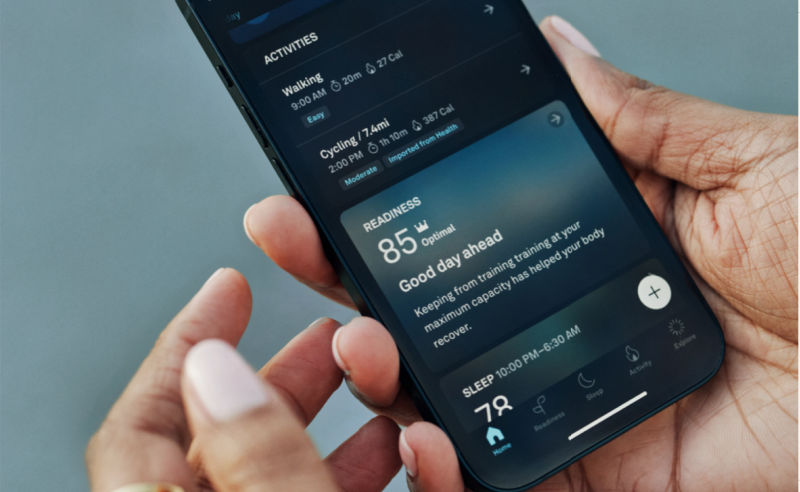
Frequently Asked Questions
Below are answers to questions I’ve received about my ring over the years:
Does Oura work with Android phones and iPhones?
Yes. My daughter has a Troomi phone which doesn’t integrate with the Oura app, but my kids do have an iPad that they use (via a hardwired connection) for school, so my daughter turns bluetooth on once per day to track her score.
How does Oura compare to other fitness trackers like the Apple Watch, FItbit, Whoop or Garmin watch?
It’s more of a health tracker that focuses on overall well-being and recovery, not a tool that’s going to help you increase your VO2 max.
Sources
- Adrian L Lopresti (2020) Association between Micronutrients and Heart Rate Variability: A Review of Human Studies
- Marco Altini (2020) What you need to know about Heart Rate Variability (HRV) data collected during the night
- Carlotta Favaro et. al. (2021) Time to Pregnancy for Women Using a Fertility Awareness Based Mobile Application to Plan a Pregnancy

